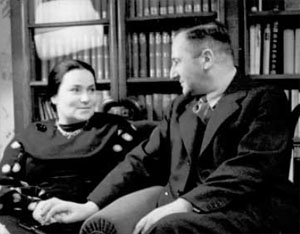Research for the “Lawyers Without Rights” Exhibition in Düsseldorf
Anwalt ohne Recht” (“Lawyers Without Rights”) is an exhibition sponsored by the Bundesrechtsanwaltskammer (German Federal Bar) and the Deutscher Juristentag (Association of German Jurists), designed to document the disenfranchisement, persecution, and the murder of non-Aryan lawyers that began in 1933. Originally shown in Berlin from 1998 to 1999, the exhibition has been seen around Germany, Europe, Israel, Canada and the United States.
 For the show in the Düsseldorf area, research was started on a list of 30 names drawn from secondary sources. But when the material was shown in Düsseldorf District Court in May of 2011, it included the names of 179 Jewish lawyers and legal trainees, with their dates and places of birth and death. For 22 of them, panels were created, showing detailed biographies. Part of the abuse faced by the remaining lawyers was the demotion to “Konsulenten,” meaning that they were only allowed to act for Jewish clients in Jewish cases – a duty which they paid for by being deported.
For the show in the Düsseldorf area, research was started on a list of 30 names drawn from secondary sources. But when the material was shown in Düsseldorf District Court in May of 2011, it included the names of 179 Jewish lawyers and legal trainees, with their dates and places of birth and death. For 22 of them, panels were created, showing detailed biographies. Part of the abuse faced by the remaining lawyers was the demotion to “Konsulenten,” meaning that they were only allowed to act for Jewish clients in Jewish cases – a duty which they paid for by being deported.
Research was like detective work. The historian worked in many archives, memorials, and various German-Jewish institutions. A great resource was the Düsseldorf archive of the Gestapo, one of the largest repositories of such documents outside of Berlin, where 70% of about 72,000 personal files are housed. Some files included emigration papers of politically active Jewish lawyers like Dr. Josef Neuberger (later Justice Minister in the state of North Rhine-Westphalia). Furthermore, the children of many of the persecuted (who are now in their 80s and 90s) and the descendants of former associates contributed greatly to the exhibition’s information on personal dates and collection of photographs. One particularly interesting photograph was found at the Salomon- Ludwig-Steinheim-Institute in Duisburg, which has a collection of photographs by Dr. Georg Goldstein, a Düsseldorf physician and amateur photographer. A tiny unidentifiable snapshot was inscribed, “Abschied bei Kramers” (“Farewell at the Kramers”), but the historian recognized that the Kramer was Friedrich Kramer, a “non-Aryan” lawyer who lost his license in 1933. The 84-yearold son of the Kramers was very touched when he got the photograph, as he didn’t own any photographs of his parents from this period and didn’t have any recollection of the interior of his family’s home.
The exhibition gives a vivid picture of the life of Jewish lawyers in the Düsseldorf area with their differing commitments to the political, religious, and social movements of the time. More importantly, it restores the names, faces, and individual fates to Düsseldorf history so that these persons can be remembered.
